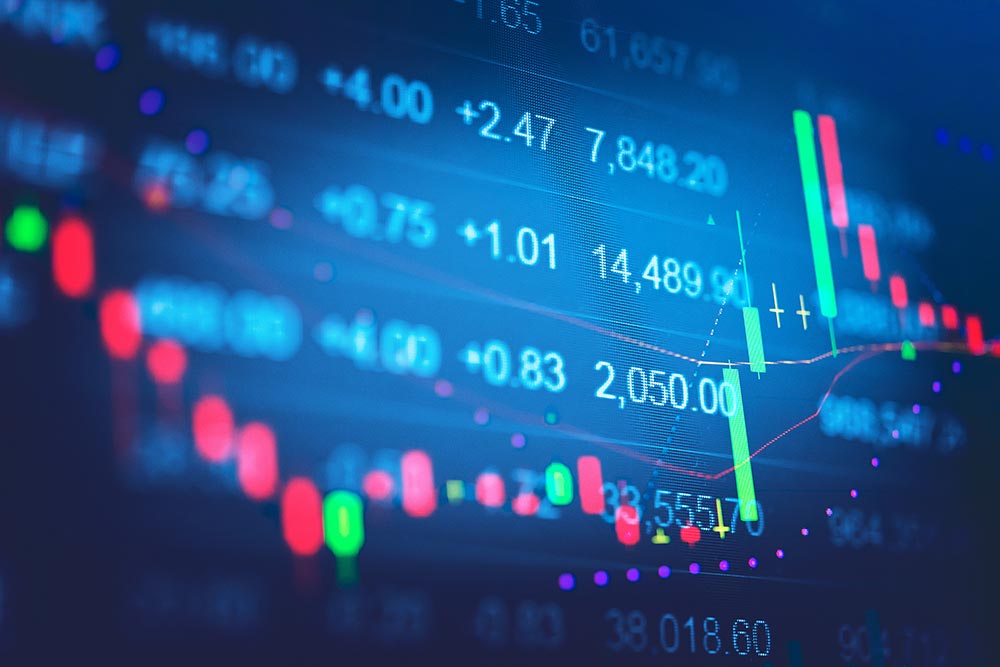CFD trading offers the trader a potentially high profit, but the unpredictability of the markets always leaves a certain percentage of risk. Traders are looking for opportunities to minimize risks and at the same time maximize profits. To do this, they resort to the use of proven trading strategies.
Trading strategies may seem complicated at first glance. But in fact, if you put a little effort and patience, they are easy to understand, because they are all based on the principles of logic. In this article, we will describe CFD trading strategies and how they apply to the CFD market.
Focus on long-term profit on trading strategies
Financial markets (and currency markets in particular) are extremely volatile and continuously respond to external events. Just one official statement, a report, and even simple rumors can initiate a trend reversal, cause a rapid rise or fall in the price of an asset. It may seem to the newcomer that the market movement is total chaos.
However, there are common patterns of asset behavior. It is often possible to foresee the future price movement, at least to some extent. Traders who are able to predict price movements and trend directions can probably expect long-term returns. The only way to achieve this is to use combinations of trading strategies. Modify them by trial and error, and adapt to current market conditions.
Another very pivotal thing that traders should pay attention to is the understanding of CFDs. Most of the beginner traders do not know what CFDs are and how they operate. Of course, if the concept is unknown to you then we cannot talk about any kind of trading strategy.
If you choose a messy and impulsive approach to trading in the CFD market or the foreign exchange market, then you have little chance of succeeding. But luck can be variable, and the probability of success can be only 50-50.
Most traders who do not use trading strategies and market analytics do not even come close to realizing their investment potential. They inevitably lose interest after weeks or months of haphazard CFD trading or failed foreign exchange trading.
Key CFD trading strategies
There are several effective trading strategies, and some have been in use for more than half a century. We should note that some brokers have their own list of trading strategies to make a trader’s job easier. If we take a look at Axiory broker which is one of the fastest-growing service providers, it offers a comprehensive list of CFD trading strategies.
Anyone who is serious about working with CFDs should at least get a superficial look at the most famous of them. The following strategies are perfect for novice traders. They can be developed and expanded, creating advanced strategies that will not miss a single trading opportunity.
Bollinger Bands
Bollinger Bands is the simplest but most effective trading tool for online CFD transactions. It offers you points for opening positions to buy and sell. The price of the asset is displayed by the line on the chart, followed by the other two: the upper blue and the red bottom. When the price of an asset touches the lower boundary, you should open a position to buy.
Accordingly, when the price reaches the upper blue boundary, a position for sale is opened. Bollinger Lines is probably the best strategy for trading CFDs for first-time traders.
RSI – Relative Strength Index
RSI is another simple and effective trading strategy for beginners. It helps to determine the relative strength of markets and to understand what tendency prevails on them: bullish or bearish. The rule of thumb is that when the RSI line rises above the 30-point mark, you should open a buy position. When the RSI line falls below the 70-point mark, you should open a sales position.
MACD Indicator
The MACD indicator (convergence/divergence of moving averages) is a strategy that may seem quite complex. But in fact, it is one of the simplest and widely used in the world of online trading CFDs and currency markets. Developed back in 1979, it is used to track trends on a graph that shows two moving averages and a histogram. This is a more sophisticated method than a standard chart with sliding averages. Experienced traders use it as an additional tool for more complex trading strategies.
Fibonacci Target Levels
The Fibonacci tool is an identifier of the maximum and minimum trend values (bullish or bearish) over a period of time. Traders are trying to determine how likely the asset will move in one direction or another. Fibonacci lines on the trading chart show the likely movement, allowing traders to open positions to buy or sell. Fibonacci lines are great for identifying points for opening stop-loss orders or taking profit.
Parabolic SAR
ParSAR (or Parabolic SAR) is an indicator that is designed to determine the momentum. You can use it to find out at what point the momentum will change direction. Often this strategy is combined with the MACD Indicator to calculate trading opportunities as accurately as possible.
The only drawback of ParSAR is its vulnerability to certain market circumstances. If an asset is trading with sharp rises, which are replaced by sharp falls, ParSAR can give confusing signals.
The Bottom Line
Overall we should note that there is no perfect strategy, that will guarantee the maximum results. A particular strategy might be useful for one trader and completely inconvenient for another. Everything depends on personal preferences and experience. So always be careful before you select a trading strategy.

